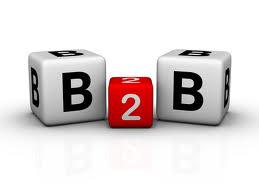Priming Your Audience
What happens when you think about words like “old”, “bald”, “wrinkled”, “retired”, and “Florida”? These are all words associated with old age. When you think about words like these, you start to behave like an older person. Indeed, you even walk more slowly than you would if you had thought about “young” words instead.
It’s an important concept called priming. Your audience is probably thinking about something before you communicate to them. What they’re thinking has a considerable influence on how your message is received.
So what can you do about it? First, you should know what’s on your audience’s mind before you begin, If the audience is positively primed, you may not need to do much more. If they’re negatively primed, however, you’ll need to take a second step and re-prime them. You can do this be carefully choosing the words and images you evoke as you set the stage. Learn more in the video.
How much praise is enough?
Ask a husband what percentage of the household chores he contributes. Write the number down. Now ask the wife what percentage she contributes. Write the number down. Now add the two numbers together. The sum will almost certainly be more than 100%. Now do the same exercise for a project team at the office. It’s a simple question: how much of the value of the project did you contribute? If you sum up all the answers, the total is likely to be greater than 200%. How can this be? Our memories work in funny ways. To manage a team effectively — and to stimulate innovation — you need to praise based on memory rather than reality. Learn more in the video.
Change the Channel
You’re communicating with a colleague at work and your message is not getting through. Maybe you have the wrong message. Or maybe you have the wrong channel. When the going gets tough, it may be time to change the channel. Learn more in the video.
When will B2B companies use social media?
The best business use of social media seems to come from business-to-consumer companies. Indeed, have you seen Tiffany’s new Facebook page? They’ve mastered the art of the timeline and are even bringing back old jewelry designs based on their followers’ votes.
So what about B2B companies? I decided to investigate using the Social Business Index published by the Dachis Group. I think of the SBI as a Klout score for businesses. The Dachis Group says the Index, “…analyzes the effectiveness of strategies and tactics organizations employ to engage the market through social channels….” The Index includes several thousand companies and is continually updated.
As you might imagine, B2C companies dominate the top end on the Index. You see names like Coca-Cola, Disney, Facebook, Google, Nike, Starbucks, and Zynga. The average score for all companies (the Composite Index) is 1,577. The companies just mentioned all scored well above 2,000.
And B2B companies? Not so easy to find. I looked for tech companies and found only three — HP, Intel, and Cisco – with scores above 1,577. The top B2B software company appears to be Oracle, with a slightly-below-average score of 1,220. That puts Oracle in 185th place compared to all companies. SAP is not far behind with a score of 1,122 and a rank of 218.
The scores drop quickly from there. EMC, Symantec, and Salesforce.com were the only other B2B software companies with scores greater than 1,000. I’m sorry to say that my old company, Lawson (now Infor) had a score of 187 which put it in 813th place. You can see all the B2B tech companies, including some services companies, in the attached pdf: B2B – Social Business Index
I’ll keep track of these companies and blog about their relative positions approximately once a month. I’m expecting B2B companies to incorporate more and more social media into their marketing programs. Let’s find out who the leaders will be.
Mash, Mash, Innovation
What do DJ Danger Mouse and improvised explosive devices (IEDs) have in common? They’re examples of one of the main engines of innovation: the mashup. Some innovations involve the creation of something entirely new. More often, innovations combine existing concepts from different domains. The concepts are well understood. The innovation comes from mashing them up — combining concepts to create something new.
What do you get if you combine wheels with luggage? Rollable luggage. (Why did it take us so long to figure that out?) What do you get if you add a power supply? Self-propelled luggage. That sounds like a good business idea.
We even have jokes that follow the same pattern. What do you get when you cross a snowman with a vampire? Frostbite. (I didn’t say they were good jokes).
Mashup thinking can lead to stunning new product development, devices, tools, and processes. What do you get when you cross an X-ray with data processing? The MRI. Mashup thinking is also fairly easy to master. You just add things together. Sometimes the result doesn’t make sense but often times, it leads you to an intriguing discovery. If you want to be more innovative, think about doing the mash.
So, what do DJ Danger Mouse and IEDs have in common? Well, watch the video.
